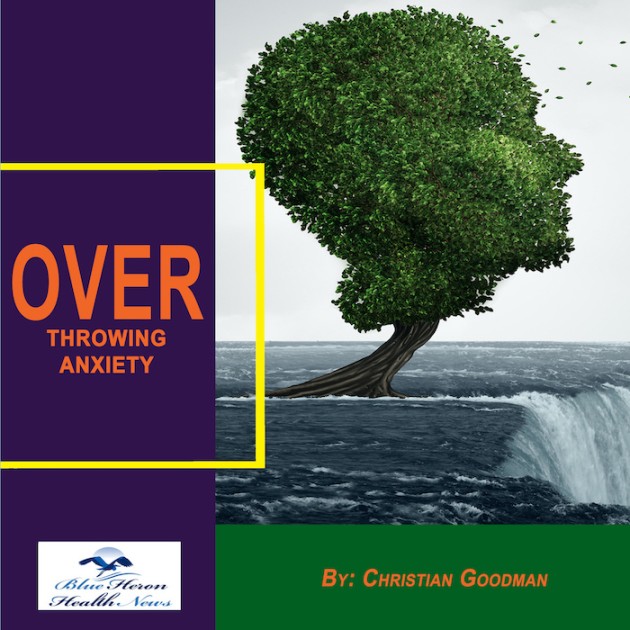
Overthrowing Anxiety™ This eBook includes a complete program to treat anxiety effectively. It guides you to learn the ways to find, understand, and accept the main cause of your anxiety and start using the techniques provided in it to treat the problem.
What are some effective strategies for managing work-related anxiety?
Managing technology use to reduce anxiety involves setting boundaries, being mindful of how technology impacts your mental health, and using tools that promote relaxation and well-being. Here are some strategies to help manage technology use in a way that supports your mental health:
1. Set Time Limits for Screen Use
-
Avoid excessive screen time, especially on social media or news websites, as it can increase anxiety.
-
Use apps or built-in phone features to set time limits on apps or websites that may trigger anxiety (e.g., social media or news).
-
Digital detox: Designate specific times (like during meals, before bed, or on weekends) to disconnect from screens. This helps prevent information overload and gives your mind a break.
2. Establish Technology-Free Zones
-
Create boundaries by establishing areas of your home where technology is not allowed, such as the bedroom or dining room. This helps prevent technology from interfering with sleep or meals.
-
Use these zones for relaxing activities such as reading, talking with loved ones, or engaging in hobbies that don’t involve screens.
3. Practice Mindful Technology Use
-
Be mindful of your emotional state when using technology. If you find that certain apps, websites, or content increase your stress or anxiety, recognize these triggers and take breaks.
-
Limit news consumption: Constantly checking the news can contribute to anxiety, especially with stressful or negative stories. Set specific times to check the news and avoid doing so before bed.
-
Social media detox: Spend less time on platforms that create stress or make you feel inadequate. Follow accounts that uplift or inspire you, and unfollow or mute content that makes you anxious.
4. Create a Healthy Sleep Routine
-
Avoid screens at least 30 minutes to an hour before bed. The blue light emitted by phones, tablets, and computers can interfere with the production of melatonin, making it harder to fall asleep and leading to disrupted sleep patterns, which can increase anxiety.
-
Use blue light filters on your devices, or consider night mode settings to reduce the impact on sleep.
-
Try reading a book, journaling, or listening to calming music instead of using your devices before bed.
5. Use Technology for Relaxation
-
Technology doesn’t always have to contribute to anxiety—it can also be used as a tool for relaxation and well-being. Consider these options:
-
Meditation apps (like Headspace, Calm, or Insight Timer) to guide mindfulness practices.
-
Breathing exercises apps (e.g., Breethe or Prana Breath) that help reduce stress and promote calm.
-
Music or sound therapy apps that provide calming sounds (e.g., nature sounds, white noise, or binaural beats) to help relax the mind.
-
Sleep apps (such as Pzizz or Relax Melodies) to aid in falling asleep and improving sleep quality.
-
6. Stay Connected Mindfully
-
Limit time on social media by unfollowing or muting accounts that increase your anxiety.
-
Prioritize real-life connections over virtual interactions. Make a habit of phone calls or face-to-face meetings with friends and family instead of relying solely on texts or social media.
-
If social media or messaging apps make you feel overwhelmed, turn off notifications or set “Do Not Disturb” mode to create a boundary and reduce stress.
7. Use Technology to Enhance Physical Health
-
Fitness apps or wearables like Fitbit or Apple Watch can help track physical activity, which is linked to improved mental health. Regular physical activity can reduce anxiety and improve mood.
-
Yoga apps (such as Yoga Studio or Down Dog) can guide you through calming stretches or exercises designed to reduce stress.
-
Mindfulness apps can incorporate deep breathing or progressive muscle relaxation to reduce physical tension and anxiety.
8. Limit Multitasking
-
Multitasking can increase stress and reduce efficiency. Try to focus on one task at a time, whether you’re working, browsing, or engaging in any other activity.
-
Use productivity tools like the Pomodoro Technique, where you set timers for focused work followed by short breaks to manage your time and reduce stress.
9. Curate Your Digital Environment
-
Unsubscribe from unnecessary email lists or notifications to reduce distractions and stressors.
-
Organize your phone or device home screens so that you can quickly access apps that help your well-being and remove those that cause anxiety.
-
Consider using apps that block distracting websites or social media platforms during set times to reduce temptation.
10. Practice Digital Mindfulness
-
Before using your devices, take a moment to check in with how you’re feeling. Ask yourself if you’re using the device out of habit, or if it aligns with your well-being goals.
-
Regularly assess your relationship with technology. Is it helping you relax, stay informed, or connect with others? Or is it contributing to your anxiety?
Summary
Managing technology use to reduce anxiety involves setting boundaries, practicing mindfulness, and using digital tools that support relaxation and well-being. Creating a healthy relationship with technology, avoiding excessive screen time, and using technology intentionally for calmness can significantly reduce stress. The key is balance—using technology to support your mental health while avoiding its overuse or misuse.
Would you like help finding specific apps or tools that could fit your lifestyle to reduce anxiety?
Overthrowing Anxiety™ This eBook includes a complete program to treat anxiety effectively. It guides you to learn the ways to find, understand, and accept the main cause of your anxiety and start using the techniques provided in it to treat the problem.
